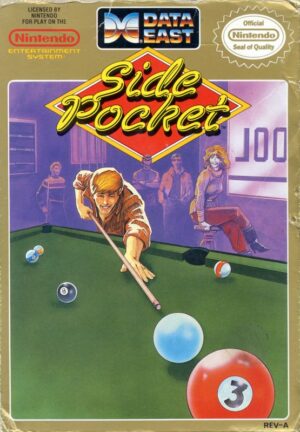Retro Replay Review
Gameplay
Tarepanda no Gunpey builds on the classic Gunpey formula by offering a suite of modes that cater to both puzzle veterans and newcomers. In Classic Gunpey, players must connect fragmented lines by dragging directional blocks, watching the lines cascade as they clear sections. The tactile responsiveness of the controls makes it easy to pick up, yet the challenge escalates quickly as line fragments speed up, demanding swift decision-making and precise movements.
Endless Gunpey mode extends the core experience by ramping up the difficulty indefinitely—a perfect test of endurance and concentration. For those who prefer a race against time, the timed line removal mode pushes players to erase as many lines as possible before the clock runs out. Meanwhile, the “all-clear” mode adds a strategic twist: you must clear every line on the board in a single move, turning each stage into a satisfying brain teaser that rewards foresight and planning.
The addition of two-player link-up functionality brings a competitive edge. Whether you’re aiming to outscore a friend or trading high scores, the head-to-head battles inject adrenaline into what can otherwise be a solitary pursuit. Exchanging high scores mid-session keeps the rivalry fresh, and the game’s netcode remains stable, ensuring minimal input lag or desynchronization even in intense matches.
Story mode is where Tarepanda no Gunpey truly differentiates itself. You guide Tare as he rolls across various landscapes in search of fellow lazy pandas. Each stage’s puzzle elements directly influence Tare’s progression: clearing a set number of lines gives him the “bounce” he needs to overcome obstacles like steep hills or chasms. This seamless blend of platform-like objectives with tile-matching mechanics injects a layer of variety and purpose that keeps the gameplay loop feeling both novel and cohesive.
Graphics
The aesthetic of Tarepanda no Gunpey is immediately charming. Soft pastel palettes and hand-drawn backgrounds evoke a warm, storybook-like atmosphere. Each locale—from foggy English moors to vibrant Indian plains—is distinct, with visual cues that hint at the cultural quirks of the lazy panda inhabitants. The level of detail in the scenery encourages exploration, even if your primary task is to manipulate puzzle blocks.
Tarepanda himself is a visual highlight. His floppy, animated rolls and exaggerated leaps when you clear key lines are delightfully expressive. The other pandas you encounter wear amusing headgear—top hats, turbans, sombreros—adding personality to every new stage. These whimsical touches ensure that even repetitive puzzle segments feel fresh, as each new character introduces a mini surprise in terms of hat design or idle animation.
The user interface is clean and unobtrusive. Block patterns are easily distinguishable, colors are used thoughtfully to avoid confusion during rapid play, and the heads-up display neatly shows timers, line counts, and two-player indicators when applicable. There’s little clutter, and transitions between modes or story cutscenes remain smooth, offering a polished package that seldom feels rushed or unfinished.
Story
At its core, the narrative of Tarepanda no Gunpey is simple but endearing. Tarepanda learns of other lazy pandas scattered around the world and sets out on a journey to find them. This premise provides just enough context for the puzzle action, transforming routine line clears into purposeful steps along Tare’s route. The story unfolds through short vignettes between chapters, each featuring playful dialogue and picturesque backdrops.
Obstacles in story mode aren’t merely decorative—they tie directly into the narrative. For example, when Tare encounters a steep incline, the game explains that he’s too relaxed to muster the energy to climb. Only by completing a certain number of lines does he build up momentum, cleverly reinforcing the connection between your puzzle performance and Tare’s adventure. Later hazards—such as rotating blocks that flip angles or temporary screen blackouts—feel like narrative hurdles rather than arbitrary difficulty spikes.
Each chapter culminates in meeting a new panda, with a brief celebration animation that highlights its unique homeland gear. These payoff moments are charming and provide a nice sense of progression. While the story isn’t deep or complex, its lighthearted tone and consistent theming give Tarepanda no Gunpey a personality that sets it apart from more generic puzzle entries.
Overall Experience
Tarepanda no Gunpey is a delightful puzzle package that blends classic Gunpey mechanics with a gentle narrative twist. Its multiple modes ensure long-term replayability—whether you’re aiming for high scores in endless mode, racing the clock in timed challenges, or reliving the story chapters. The two-player link-up adds a social dimension, making it an excellent choice for friendly competitions.
The presentation is polished from start to finish. Graphics are cute and culturally varied, the interface is intuitive, and the animations carry a whimsical charm. Even the novel hazards introduced in story mode feel thoughtfully implemented, keeping the formula from growing stale. Fans of tile-matching puzzles will appreciate the balance between speed and strategy, and newcomers will find the learning curve approachable thanks to clear tutorials and gradual difficulty ramps.
For anyone seeking a portable puzzle experience with personality, Tarepanda no Gunpey delivers. It honors the heritage of Gunpey while carving out its own identity through charming visuals, relatable heroics, and just the right amount of narrative framing. Whether you’re solving lines in a quick burst or embarking on Tare’s full globe-trotting odyssey, this game offers a relaxing yet stimulating escape that many players will find hard to resist.
 Retro Replay Retro Replay gaming reviews, news, emulation, geek stuff and more!
Retro Replay Retro Replay gaming reviews, news, emulation, geek stuff and more!









Reviews
There are no reviews yet.